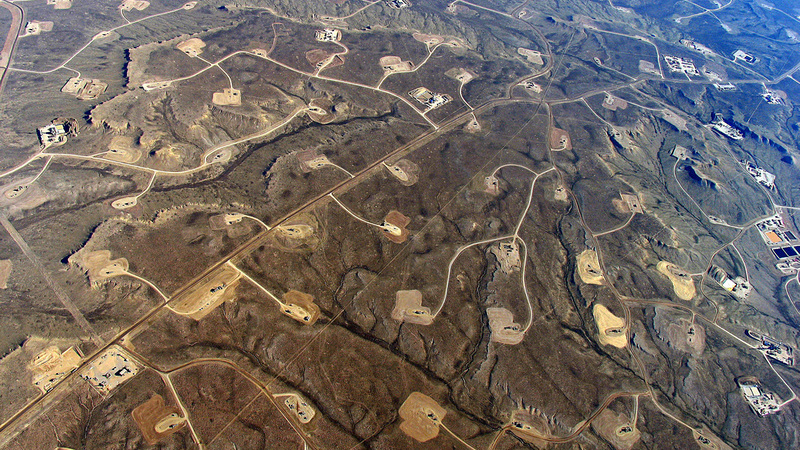It’s one of the Paris Agreement’s biggest blind spots.
The plans countries have submitted to the deal set emissions reduction targets and scale up renewable energy. But a remarkable number fail to address a vitally important piece of the climate puzzle: fossil fuel production.
The international climate community is in Abu Dhabi this weekend to prepare for the landmark UN Climate Action Summit this September. Spearheaded by the UN Secretary-General, the summit will mobilise political leaders, the private sector, and civil society to give a much-needed boost to collective climate ambition.
Already, the UN has signalled some 80 countries may be increasing their international climate pledges as part of this effort. But if the past is any guide, these country pledges will fail to include their production of the fuels that drive global warming.
New research from SEI shows that a third of fossil-fuel-producing countries make no mention of extraction in their current nationally determined contributions (NDCs). And not a single country has mapped a path away from coal, oil, or gas extraction.
It’s time to change that, if we are to have any chance of meeting the Paris Agreement’s goals.
Four countries have declared climate emergencies, yet give billions to fossil fuels
Countries are right to address fossil fuel consumption. But they must also address production to ensure deeper emission reductions, broader buy-in, and better planned transitions.
Calls are growing for countries to take action to wind down fossil fuel production. Over 500 NGOs have signed the Lofoten Declaration, which calls for an end to fossil fuel development and a managed decline of existing production. The leaders of the Pacific islands similarly called for an international moratorium in the Suva Declaration. And fossil fuel supply-side policies are beginning to gain ground globally: from bans on oil exploration in Costa Rica, France and Belize; to the shuttering of outdated coal mines in China; and increased taxation of coal production in India.
This momentum can build within the international climate process. The Paris Agreement creates various new opportunities for countries to address fossil fuel supply. For example, countries could include targets, pathways and policy measures to wind down fossil fuel production within their NDCs and their long-term low greenhouse gas emission development strategies (LEDS). They could also include plans for economic diversification and a just transition for fossil-fuel dependent workers and communities.
Climate Home News needs your help… We’re an independent news outlet dedicated to the most important global stories. If you can spare even a few dollars each month, it would make a huge difference to us. Our Patreon account is a safe and easy way to support our work.
Due to the bottom-up nature of these plans, countries can include these supply-side approaches without agreement among all parties. In the short term, at least, this renders it a more politically feasible strategy than supply-side measures that require consensus. This approach could nevertheless help socialise supply-side action at the UN level, and generate a virtuous cycle that encourages countries to take more ambitious supply-side action.
So far, countries have not taken advantage of this potential. Only two nations – India and Nigeria – have included measures in their NDCs to financially disincentivise, or address public support for, fossil fuel production.
When countries’ climate plans do discuss fossil fuels, this is mainly in the context of reducing the emissions associated with their extraction and delivery. While important, such efforts would, at their fullest potential, contribute just a few percent to global emissions reductions, and do not obviate the need to scale down overall production. Some plans also highlight the need for a just transition and economic diversification away from fossil fuel production; however, they tend to lack concrete measures to make such visions a reality.
A handful of countries also express an intention to continue or ramp up their fossil fuel production. Though every country does not need to curb extraction at the same pace, it is important for countries to grapple with the question of whose carbon is burnable in a climate-constrained world. When referencing fossil fuel production, countries should therefore explain why their plans are fair and ambitious.
Climate news straight to your inbox? Sign up here
Countries are expected to “demonstrate a leap in collective national political ambition” when they meet at the Climate Action Summit in September. By addressing fossil fuel production in their NDCs and LEDS, countries would take a key step in bringing this bold – but necessary – vision within reach.
To date, we’ve tried tackling the climate crisis almost exclusively through demand-focused policies. It’s time to change the status quo, and take the road less taken – one that prioritises reducing both the use and the production of fossil fuels.
Cleo Verkuijl is a research fellow and Natalie Jones is a policy intern at the Stockholm Environment Institute. Their recent research on NDCs and LEDS is detailed in the working paper, Untapped ambition: addressing fossil fuel production through NDCs and LEDS.
